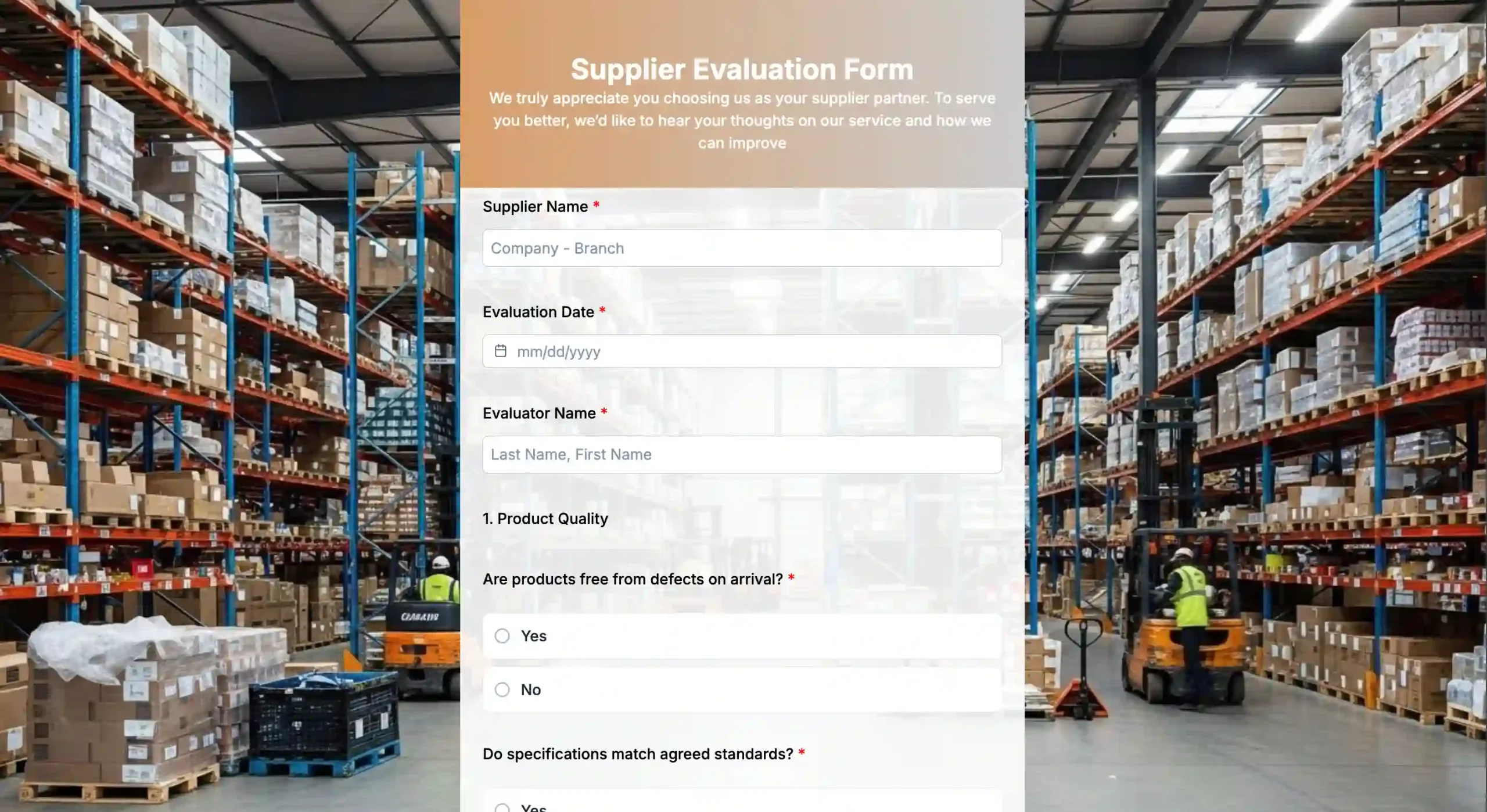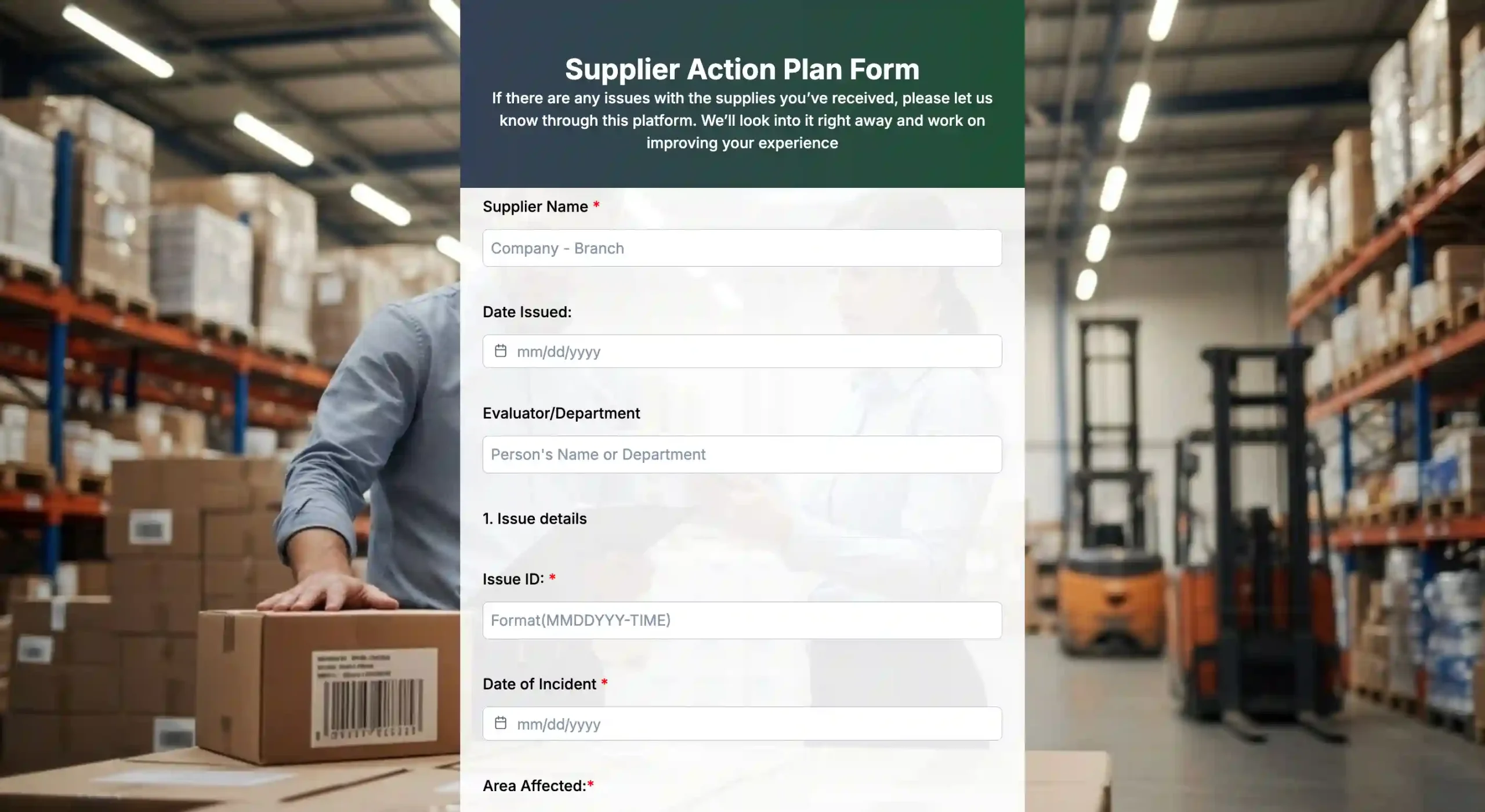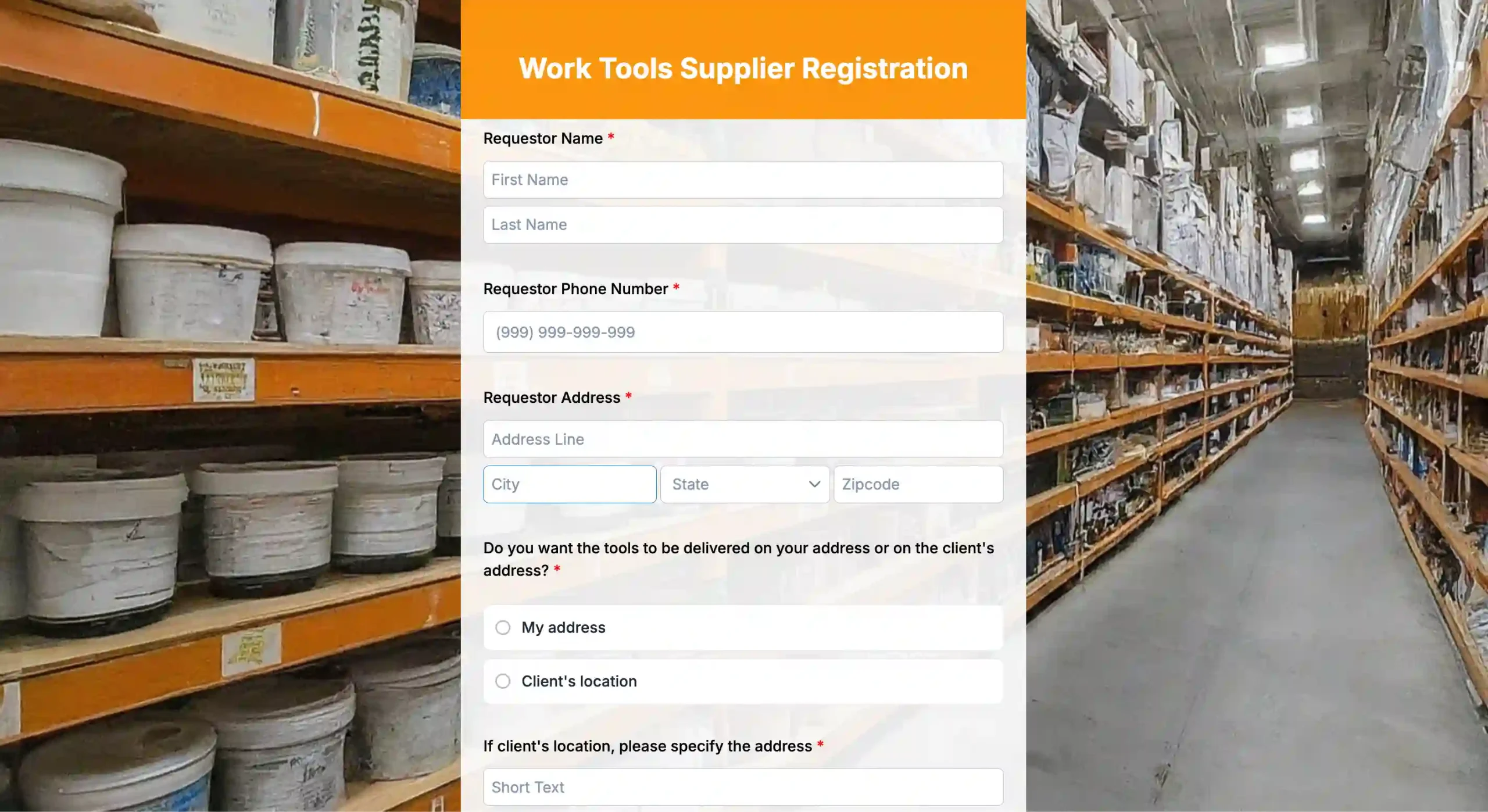
When it comes to business operations, the supply chain is one of the many important things that managers should focus on. To make a business operate smoothly, it is necessary to ensure that supply chain management is up to the mark. One way to ensure that is through a supplier evaluation form for logistics.
Companies use free-form generators to create QR forms and evaluate suppliers. This is an important process to ensure that their relationships are mutually beneficial. Such evaluations are also necessary to make adjustments if something is unsatisfactory.
Companies can speed up data entry and evaluation processes by integrating QR codes into forms. This new technology is useful not only for supply tracking but also for other meaningful tasks. So, let’s see how QR-powered logistics forms benefit a business.
What is a supplier evaluation form for logistics & why does it matter
Supplier evaluation is a term many businesses use to describe the process of assessing existing suppliers. There are many ways to perform a logistics service provider evaluation, but the best is to use the supplier assessment form. The form includes several assessment parameters, including production cost, capacity, quality, and the supplier’s competency.
For businesses, this form measures the supplier’s performance, eventually resulting in better cost and product quality. The management team would later use this form to make decisions regarding risk management and maintain the company’s effective production capacity. The best part about using forms is that they can be integrated well into QR codes, making the form easily accessible to the relevant staff.
What is the process for evaluating supplier logistics
Phase 1: Define goals and criteria
Evaluations are conducted according to a specific set of procedures, just like any other operational activity. First, identify the key qualities it needs from your suppliers. Knowing these core needs helps define KPIs, which are measurable metrics for standardized evaluations. For instance:
Delivery performance
| Quarter # | ||||
| Criteria | Criteria description | Qualified orders (%) | Total orders | Audit Notes |
| On-Time Delivery (OTD) rate | Orders delivered on time | |||
| Order accuracy rate | Orders delivered correctly with no damage | |||
| Lead time | Total time from order placement to delivery | |||
Cost performance: Total Cost of Ownership (TCO)
| Product Title | SKU | Unit Price | Inventory holding costs | Return-to-Vendor (RTV) Costs | Freight/shipping costs |
| ### | |||||
| ### |
Process quality and responsiveness
1. Advanced Shipment Notification (ASN) accuracy
- Does the supplier always send ASNs on time, before shipping?
- Is the ASN always accurate?
- How often are there mistakes in the ASNs?
2. Responsiveness to changes
- Does the supplier quickly confirm order changes?
- Can the supplier adjust their plans without causing delays?
- Does the supplier communicate well when problems come up?
Then, to calculate a meaningful performance score, assign a weight and a target value to each criterion. The weights ensure your most important goals have the greatest impact on the final result.
For example:
- Delivery performance – (45%)
- Cost performance: Total Cost of Ownership (TCO) – (25%)
- Process quality and responsiveness – (30%)
Phase 2: Data collection and analysis
This phase is all about collecting the correct information and turning it into actionable intelligence.
1. Roll out the evaluation form
First, build your supplier evaluation form based on the KPIs you selected. Then, share it with your team or auditors so they can start gathering data directly from your suppliers.
2. Assess capabilities
Next, take a closer look at how your suppliers manage their logistics. You can do this through a few key methods:
- Digital surveys: Send out online questionnaires to learn about their fleet, warehouse systems (WMS), distribution networks, and whether they use any third-party partners.
- On-site visits: For your most critical suppliers, there’s no substitute for seeing them in person. Schedule a visit to verify their capacity, quality controls, and handling processes in person.
- Document review: Check their paperwork. This includes validating necessary certifications (like ISO), safety records, and how they handle packaging and labeling.
3. Calculate scores and benchmark
Compile the data and calculate scores with a weighted model. Compare them to industry standards, your own targets, or other suppliers. Use these insights to plan concrete steps that improve supplier performance and strengthen your supply chain.
Phase 3: Feedback and action loop
This phase turns your evaluation results into a powerful tool for building stronger supplier partnerships and driving continuous growth.
1. Hold performance review meetings
Set up regular check-ins (monthly or quarterly) with your supplier to walk through their scorecard. Use this time to openly discuss performance gaps and celebrate wins together.
2. Build a collaborative action plan
When issues come up, team up with your supplier to find the real root cause. Then, create a clear, joint plan with specific goals and deadlines for improvement.
- Example: If their On-Time Delivery is low, the plan could involve them revamping their internal picking process or switching to a more reliable freight carrier.
3. Track progress
Keep a close eye on how things are going. Continuously monitor the supplier’s progress against the action plan you built together to ensure they’re on track.
4. Re-evaluate and refine
Remember, this isn’t a one-and-done process. After a set period (e.g., annually), run the entire evaluation again. This ensures performance is sustained and allows you to update your criteria as your own business needs change.
Key areas to review in supplier evaluation
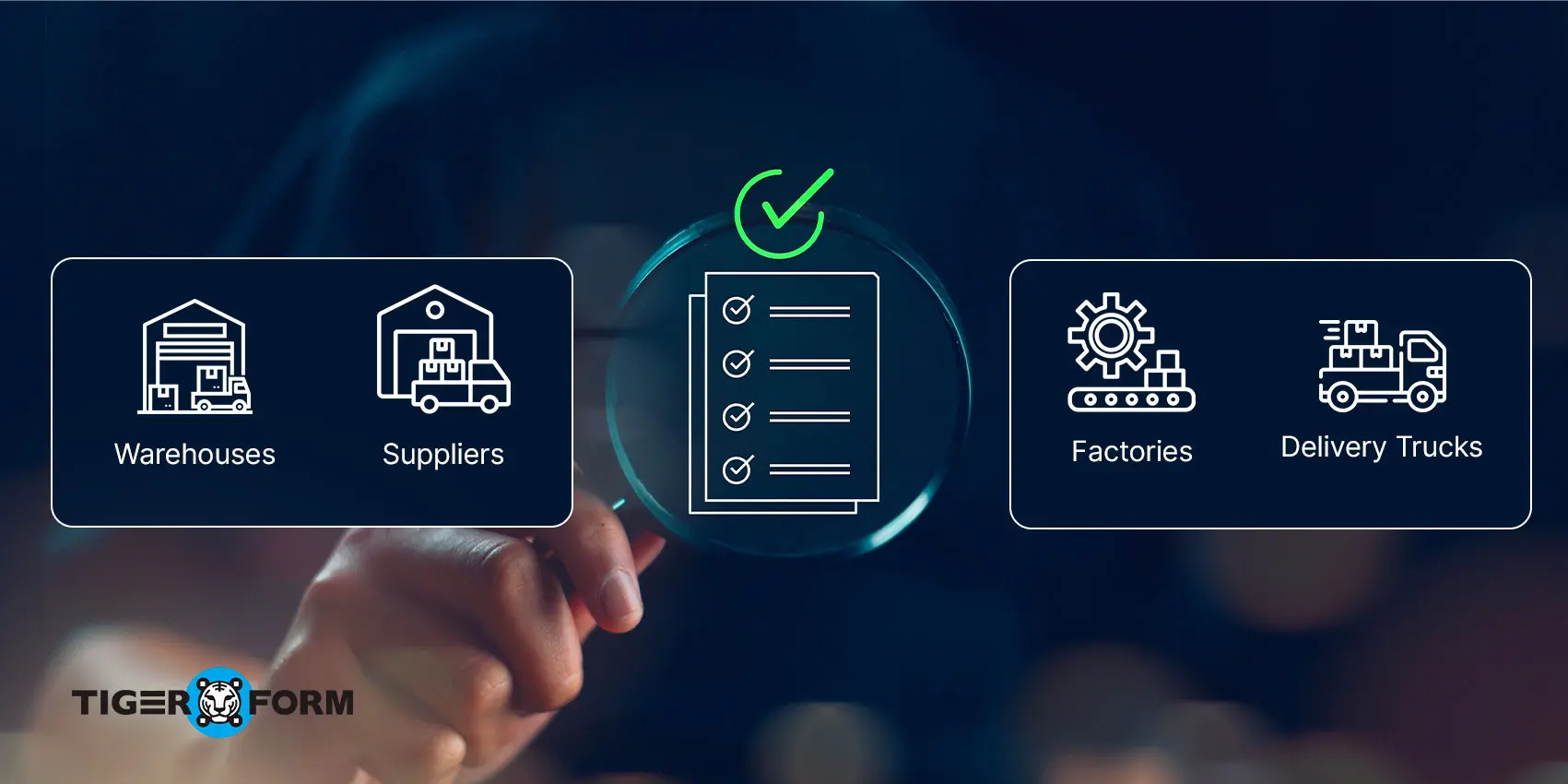
Core areas
- Product quality: Do their products work well and meet your standards every time?
- Delivery and logistics: Do they deliver the right stuff, on time, and in good condition?
- Cost structure: Is their pricing fair, clear, and manageable for your budget?
- Service and communications: Are they easy to work with and quick to answer questions or solve problems?
Operational and financial stability
- Capacity and growth potential: Can they handle your business now and in the future as you grow?
- Risk and resilience: How do they deal with unexpected issues like material shortages or factory troubles?
- Financial stability: Is their business financially stable and likely to be around for the long term?
Compliance
- Compliance: Do they obey all laws and industry rules?
- Sustainability and ESG: Do they care about their impact on the environment and their community?
- Technology and innovations: Do they use good systems and look for ways to get better?
Benefits of assessing suppliers
Some companies use a form tool to create a form for evaluating suppliers. This is done to make it easier to assess their suppliers. There are some benefits that companies can obtain from this process, such as:
Mitigating risks
Risks increase as a company grows. Therefore, risk mitigation is necessary to ensure that businesses can last longer. Supplier evaluation allows companies to lower the risks of contract failure, security, and material quality.
Evaluate suppliers’ performance
Companies should also use makers to evaluate their suppliers. One study shows that supplier evaluation affects a company’s procurement process performance. This is because the evaluation can motivate suppliers to improve their production. Thus, this process results in higher motivation and efficiency from suppliers, which is also good for companies.
Costs reduction
The supplier evaluations are useful for any organization because they can influence the quality of products or materials. This evaluation allows companies to choose their partners more carefully by comparing the costs and material quality. Eventually, the process can result in a wiser decision to select the right suppliers that can benefit companies.
How to create an online evaluation form with the form builder
Now that you know the importance of QR codes for supplier evaluation, it’s time to create a high-quality evaluation form for your business. Use this form creation guide to help you build it with an efficient form-maker tool:
Step 1: Design the form
To create an evaluation form, sign up for a form builder and customize the form according to your needs. You can add multiple-choice questions, open-ended feedback sections, and more. Change the backdrop, add a logo, multimedia fields, or anything you want. The best part is that you can find various supplier evaluation templates that you can use to create forms.
Step 2: Generate the QR code
Once you have finalized the form, you can preview it. If you are happy with the results, the next step is to create a QR code. Click on “Generate QR code” at the top right, and there you have it.
Step 3: Customize the QR code
You can customize the QR code to align with your brand. Change colors, add a logo, or anything else you like. Once done, download the QR code.
Step 4: Distribute the QR code
Share the QR code with your teams and place it on emails, documents, supplier packaging, or anywhere else you deem necessary. Integrating QR codes into an end-to-end Logistics system can help trace products.
Templates for supplier evaluations
Supplier evaluation form
In one organized form, evaluate and document supplier performance across quality, delivery, capacity, risk, finance, compliance, and sustainability. Create your supplier audit form now!
Supplier action plan form
Capture and manage supplier problems and planned fixes in one clear record to keep performance on track. Use this template now!
Supplier registration form
Simplify your sourcing efforts and discover new suppliers. Our online work tool supplier registration form makes it easy to connect with businesses that can meet your needs.
Form QR codes for logistics
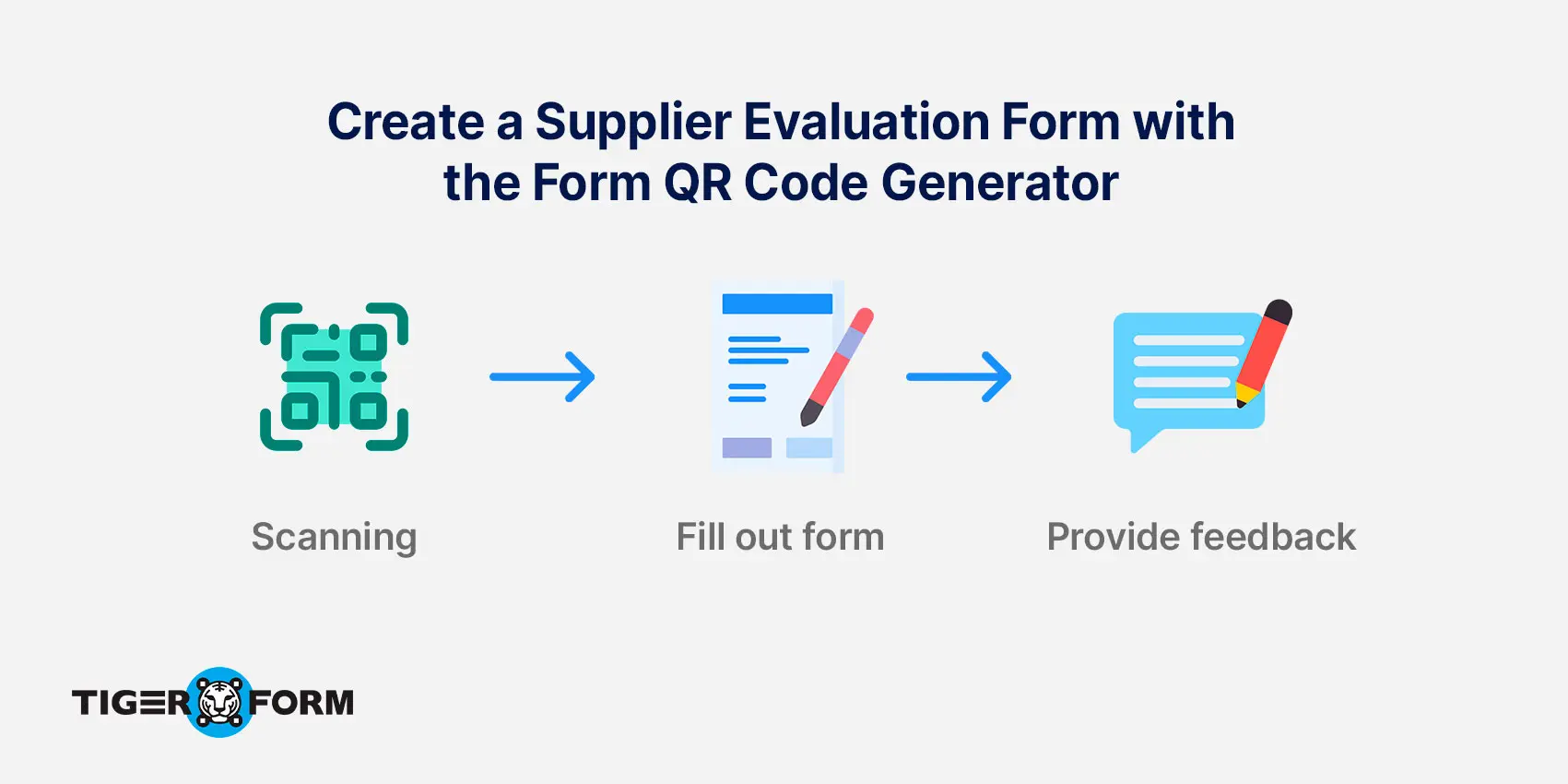
Currently, many companies use QR forms for logistics. These forms can be created using TIGER FORM, a free form QR code generator. By using logistics QR codes as a data collection method or supplier evaluation tool, businesses can easily increase the product’s location visibility and reduce human errors from manual entry.
Today, QR codes are implemented everywhere, regardless of industry or product. The interconnectivity between the codes and the management platforms allows anybody to connect users to forms, videos, social media links, and more.
Many prefer QR codes over traditional barcodes because they can embed more information. With many data points, QR codes for logistics provide detailed information about the product, including its recent location, the number of scans taken, and much more.
In addition, businesses can use QR forms to share their business details, including locations, social media, and contact numbers. However, it is not difficult to access this information. Anyone can use their mobile phones to scan QR codes for logistics; it is that easy. For most businesses, QR codes can be a good solution to lower inventory management costs and create more effective material management.
The advantages of forms for supplier evaluation
Companies can use an online form platform to create an online evaluation form. The platform already prepares everything, so companies only need to customize the form to suit their businesses better. Here are some supplier evaluation benefits of forms:
Informed supplier selection
Collecting this information is vital for any company that wishes to run its supply chain efficiently. The questions in the form would help businesses decide whether to work with a particular supplier.
Better risk management
Using a QR form generator offers the advantage of risk management. If the company is unaware of any particular supplier, the form would be a helpful tool for getting information about the supplier. This significantly reduces the risk of engaging with unreliable suppliers.
To manage supply chain risks, 73% of companies now use dual sourcing, indicating a broader trend in procurement toward balancing cost savings with supply security in an unpredictable global market. (McKinsey). Supplier evaluation forms help ensure backup vendors meet quality and compliance standards before disruptions hit.
Performance assessment
Evaluation forms can be used to track supplier performance. These forms help identify issues early, allowing them to be addressed before they become major problems. Evaluations also provide suppliers with valuable feedback, helping them understand expectations and make necessary improvements.
Aside from evaluation forms, audience feedback forms play a crucial role in assessing how supplier products meet consumer expectations. This helps retailers refine their sourcing strategies and maintain strong supplier relationships.
Cost factor analysis
Another benefit of using the online evaluation form is the ability to assess the price of a product. Companies incur some costs when hiring a supplier. Most of the time, there would be an investment worth a huge amount of money in this partnership.
Strategic planning
Analyzing the performance metrics from supplier evaluation can help a business determine which suppliers are more cost-effective and reliable. For instance, if a supplier continues to underperform, a business can use the evaluation data obtained through evaluation forms to renegotiate the terms or look for alternative suppliers.
Accountability
Accountability is ensured with a QR code-linked form generator that is easily accessible with a quick scan. When suppliers know that their performance is being monitored, they feel more motivated to follow the agreed-upon standards and have a sense of responsibility. Businesses will feel the suppliers put more effort into meeting deadlines, addressing any issues, and maintaining quality standards.
For example, QR codes can enhance secure customer details by replacing exposed personal information on parcel labels with encrypted QR codes. This prevents unauthorized access to sensitive customer data, reducing the risks of fraud and identity theft.

Enhance supply chain visibility with a logistics evaluation form
Digital forms provide end-to-end visibility across all parts of the supply chain. These forms help companies gain better insights into their suppliers and track products. This increased visibility can lead to lower costs, stronger relationships with stakeholders, and better risk management in production.
If you want to improve your supply network management, a well-structured supplier evaluation form for logistics can be a valuable tool. It helps assess supplier performance, streamline processes, and support long-term operational efficiency. Visit our official website now to create efficient forms!
FAQs
What are the benefits of using digital evaluation forms in logistics?
Digital forms streamline the assessment process by improving efficiency, accuracy, and consistency in supplier performance tracking. They allow real-time data collection, reduce paperwork, enable faster decision-making, and improve compliance with procurement standards. Additionally, they enhance stakeholder collaboration by providing centralized access to supplier evaluations.
What are the 5 key supplier evaluation criteria?
The five criteria for evaluating a supplier are the following:
(1) Product quality
(2) Operational capacity
(3) Financial costs
(4) Regulatory compliance
(5) Ethical sustainability.
Conducting a supplier performance review helps businesses assess reliability and manage risks. Regular reviews ensure suppliers meet expectations, comply with standards, and support long-term efficiency.
Which is the most common method of supplier evaluation?
The most common method is the Scorecard Method, where suppliers are rated based on predefined criteria such as quality, cost, delivery, and service. This method assigns scores to each category, making it easy to compare suppliers objectively and track performance over time.
How often should companies evaluate their logistics suppliers?
Companies should evaluate their logistics suppliers on a regular basis, typically annually or biannually, to ensure they are meeting performance expectations.
What are some common challenges in evaluating logistics suppliers?
Common challenges in evaluating logistics suppliers include inconsistent data collection methods, a lack of transparency from suppliers, and difficulty in quantifying qualitative criteria.
Can supplier evaluation forms help companies save money?
Yes, supplier evaluation forms can help companies identify inefficiencies in their logistics partnerships and negotiate better rates with suppliers, ultimately saving money in the long run.
Are there any best practices for conducting supplier evaluations in logistics?
Best practices for conducting supplier evaluations in logistics include setting clear performance expectations, providing feedback to suppliers, and collaborating with them to develop improvement plans.
What should companies do if a logistics supplier consistently underperforms?
If a logistics supplier consistently underperforms, companies may need to consider terminating the partnership and finding a new supplier who can meet their needs more effectively.
How can companies ensure the objectivity of supplier evaluations?
Companies can ensure the objectivity of supplier evaluations by involving multiple stakeholders in the evaluation process, using quantifiable performance metrics, and avoiding bias in decision-making.

